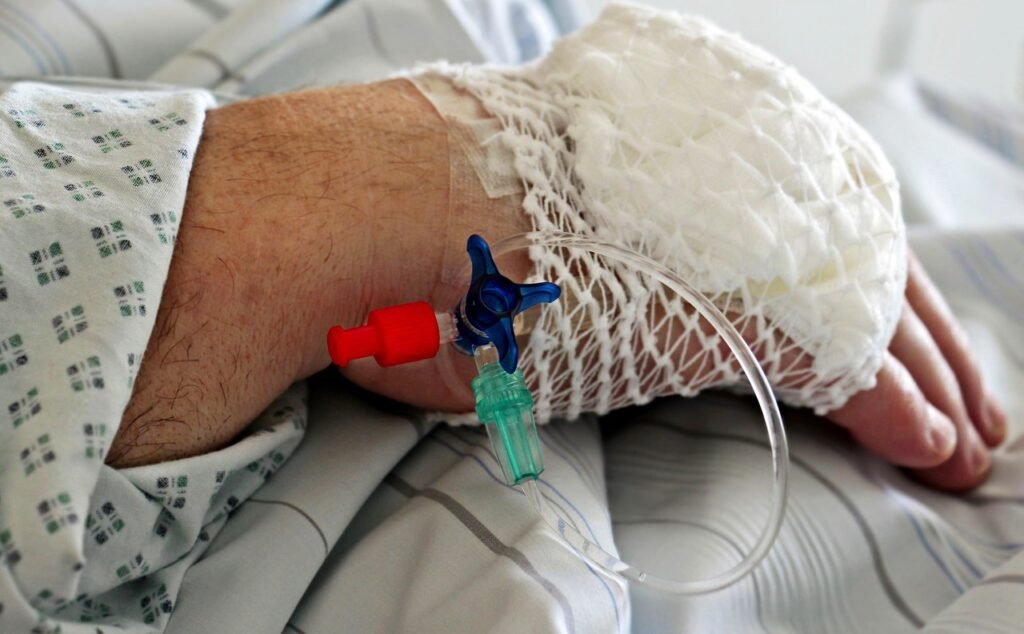Chronic venous insufficiency is capturing growing attention across the UK, with the topic trending in health searches and public discussions. As cases rise due to aging, lifestyle factors, and awareness of vascular health, the importance of understanding this condition is paramount. For thousands of Britons, chronic venous insufficiency brings daily discomfort and risks of serious complications, making it essential to grasp its symptoms, causes, and treatment options.
Understanding Chronic Venous Insufficiency
Chronic venous insufficiency, often referred to as CVI, occurs when the veins in the legs become unable to return blood efficiently to the heart. The underlying issue typically lies with the tiny valves inside leg veins. Over time, these valves may weaken or sustain damage due to various factors. When this happens, blood can leak backwards—a process known as venous reflux—and pool in the legs, leading to pressure, swelling, and visible skin changes.
While the condition can affect anyone, it is most common among adults over 50 and has a higher prevalence in women. Contributing factors include obesity, a sedentary lifestyle, pregnancy, a family history of venous disease, smoking, and prolonged periods of standing or sitting.
Prevalence and Recent UK Data
Chronic venous insufficiency ranks among the most common vascular disorders in Western Europe. According to the landmark Edinburgh Vein Study, the age-adjusted prevalence in the UK is about 9% for men and nearly 7% for women. For those over 50, the rates increase, with more than one in five men and around one in eight women affected. UK experts estimate that the prevalence could climb as the population ages and lifestyles become more sedentary.
Varicose veins, often a sign of underlying CVI, affect nearly 40% of men and 32% of women in the UK at some stage. Studies indicate that up to 2% of adults in Western countries have more advanced stages of the disease, making it a significant contributor to NHS expenditure and patient disability.
Recognising the Symptoms
Chronic venous insufficiency emerges gradually. Early symptoms often include heavy, aching, or tired legs that become worse after standing. Swelling around the ankles or lower legs, along with discomfort or throbbing, is common. With progression, more noticeable signs develop: skin may appear brown or discoloured, particularly around the ankles; the texture may become hard, tight, or fragile; and varicose veins might become visible.
As the condition advances, complications can arise. These include eczema-like skin inflammation (varicose eczema), the development of open leg ulcers that resist healing, and increased risk of infections. In severe cases, ulceration leads to persistent wounds and significantly lowers quality of life.
Causes and Risk Factors
The primary cause of chronic venous insufficiency is malfunctioning vein valves. Often, this results from previous blood clots, or deep vein thrombosis (DVT), which damage the valves and disrupt normal blood flow. However, many people develop CVI without a history of blood clots, as primary valve incompetence can arise from hereditary or lifestyle factors. Obesity, aging, pregnancy, hormones, and family history are common contributors.
Recent UK research shows that people with obesity are significantly at risk. In a survey of patients attending an NHS weight management service, one in four already had a diagnosis of lower limb venous disease, while many more reported symptoms without formal recognition. Awareness of risk factors remains low, underlining the need for public education on preventing and managing this condition.
Diagnosing Chronic Venous Insufficiency
Doctors use a combination of history, physical examination, and imaging—most often a duplex ultrasound—to diagnose CVI. The scan checks blood flow and valve function in the veins, helping to identify which segments are affected and guiding treatment decisions. Clinical assessment might also look for specific signs such as swelling, skin colour changes, pain, itching, and ulceration.
Latest NHS guidance recommends a thorough evaluation, including prompt referral for those with significant symptoms, leg ulcers not healing within two weeks, or suspected vein-thrombosis complications.
Complications and Broader Health Impacts
If unmanaged, chronic venous insufficiency can lead to serious and sometimes life-changing complications. Among the most worrying is the development of venous leg ulcers. These wounds can be slow to heal and are prone to infection. In addition, evidence now links venous disease to wider cardiovascular risks, including heart attacks and strokes, suggesting an inflammatory process that may affect the entire circulatory system. Early intervention not only helps the legs but could improve overall cardiovascular health.
Treatment Options: UK Best Practices
Lifestyle modification is the cornerstone of treatment for most cases. Patients benefit from weight loss, regular exercise, and avoiding long periods of standing or sitting. Elevating the legs helps reduce swelling, while maintaining mobility improves circulation.
Compression therapy with graded stockings forms the mainstay for symptom control and prevention of progression. These stockings apply gentle pressure, supporting the veins and improving blood flow. However, NICE guidelines advise that compression should not be the sole option for those eligible for other interventions.
When symptoms fail to improve or complications develop, the NHS offers several minimally invasive procedures. Choices include endovenous ablation, where heat closes faulty veins; ultrasound-guided foam sclerotherapy, in which a solution seals off affected veins; and, if unsuitable, traditional surgical options such as vein stripping. Newer treatments tend to have shorter recovery times and fewer risks.
Medications may play a role in managing infections or eczema and preventing blood clots, especially in at-risk groups. Rarely, advanced disease may require open surgery, vein repair, or even bypass, but this is seldom needed in the UK.
Conclusion
Chronic venous insufficiency represents more than a cosmetic issue. As its prevalence rises, bringing pain, disability, and mounting healthcare costs, the call for early detection, evidence-based care, and informed public discussion grows louder across the UK. Recent advances in treatment provide new hope, but timely intervention and lifestyle changes remain the foundations of long-term well-being.
With better education, robust care pathways, and enhanced community support, the impact of CVI on individual lives and the NHS can be lessened—paving the way for healthier, more active futures for all.
To read more click here

